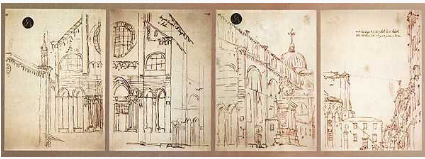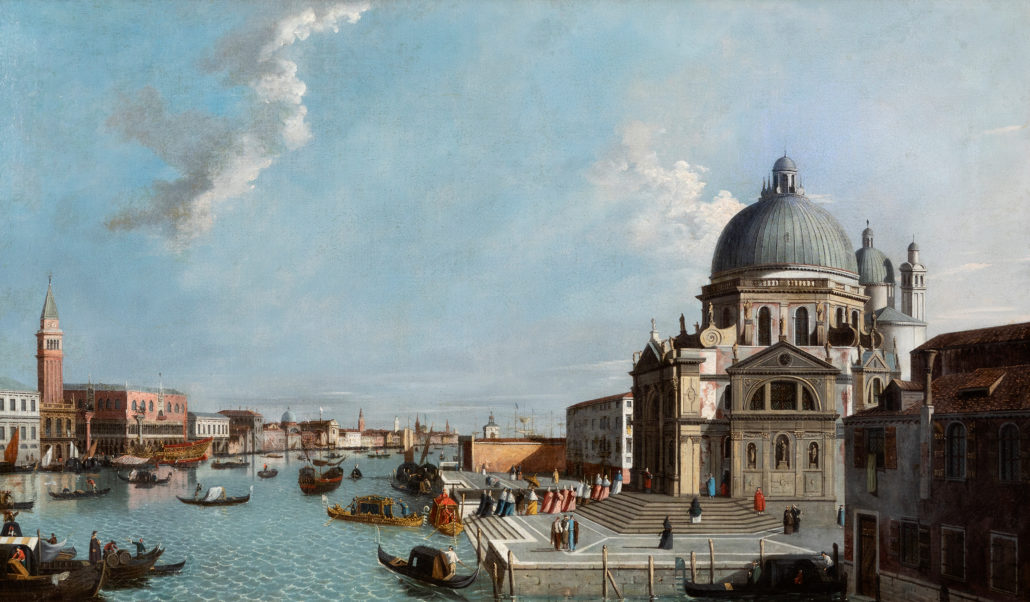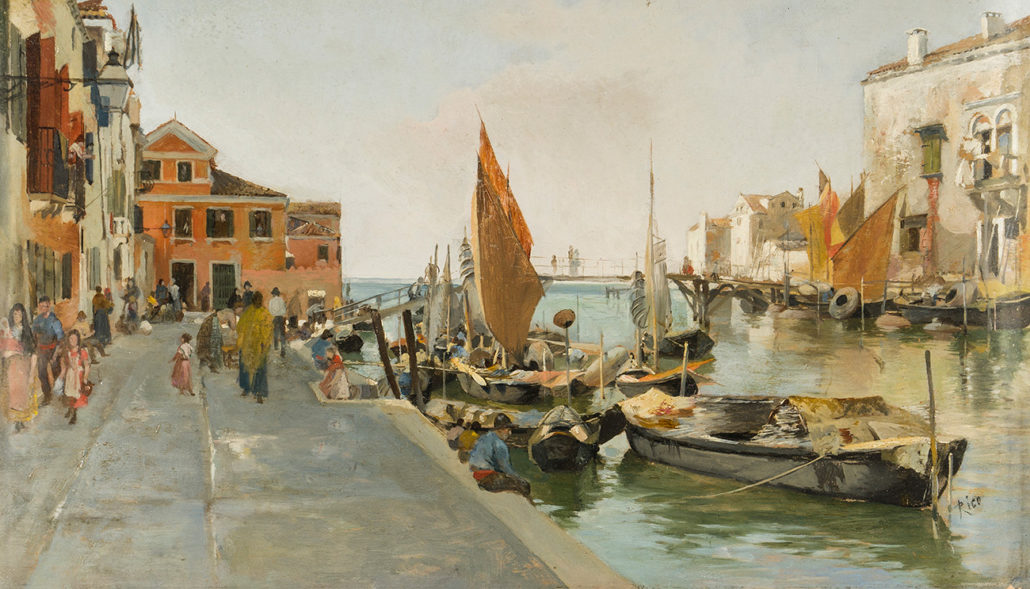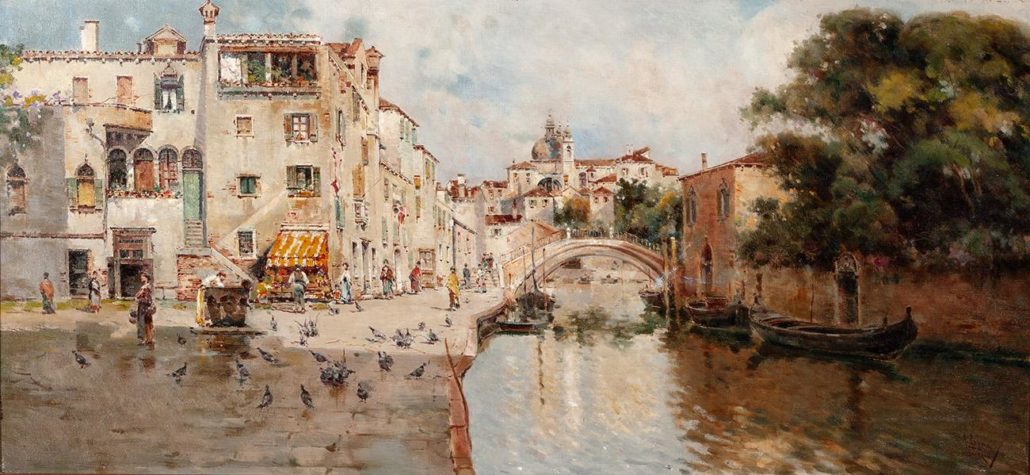Vedutism and Venice in Setdart.
A veduta is a detailed representation of urban views, typical of 18th century Italian painting . They were especially popular with aristocratic Grand Tour travelers, who acquired views of the places visited on the continent, such as the Roman Forums or the Grand Canal. Towards the middle of the 18th century, Venice became the undisputed center of the vedutisti, led by members of prominent families of painters such as the Canal and the Guardi.

Giovanni Antonio Canal, called Canaletto (1697 – 1768) enjoys such popularity among English Grand Tour tourists that he decides to embark between 1746 and 1756 to England to expand his market. His work is admired by the English gentry and aristocracy, becoming a commercial success and a source of inspiration for local artists such as William Marlow, Samuel Scott and William James.
Setdart is soon putting out to tender a view of the Venice canal and the Church of Santa Maria della Salute attributed to William James, who is one of the most elusive figures in 18th century English painting. . Very little is known of his life and career, in addition to the fact that he participated in exhibitions at the Society of Artists between 1761 and 1768 and at the prestigious Royal Academy from 1769 to 1771. The painter Edward Edwards (1738-1806) in his work “Anecdotes of painters” affirms that James would have been Canaletto’s assistant in his London studio, however to date no documentary evidence has been found to support such an assertion.
Although William James never leaves his native country, he dedicates much of his work to Venetian vedute women, destined to quench the English market’s thirst for spectacular views of iconic Grand Tour destinations. Today James’ work is represented in the Royal Collection at Hampton Court Palace as well as the Victoria & Albert Museum in London.
During the 19th century, more personal impressions of urban landscapes replaced the desire for topographical precision. An important international community settles in Venice, made up of artists such as Antonietta Brandeis, and the Spaniards Martín Rico and Ortega (lot 35217454), Mariano Fortuny and Antonio Reyna Manescau (lot 35190831). The rise of the international market for Venetian landscapes provides a wide commercial platform and ensures the success of these artists. The demand for his works is such that some of them are practically exclusively dedicated to painting vedute of the lagoon with minimal variations and have just cemented in the collective imagination the perception of a voluptuous, magical and decadent Venice.
Interest in vedutisti continues in our time, reaching high prices in the market and generating fascination in the academic and museum fields. Large exhibitions have been dedicated to them in recent years, for example at the National Gallery in London in 2011.





